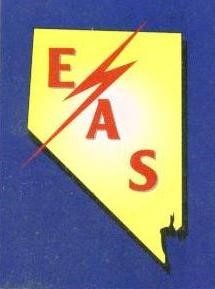 Nevada EAS News Release
Nevada EAS News Release
Hawaii EAS/WEA False Alarm—“Could it happen here?”
In light of this morning’s false alarm warning situation in Hawaii, here is some information on how the Emergency Alert System (EAS) and Wireless Emergency Alerts (WEA) work in Nevada.
EAS activations are broadcast messages, issued by radio and television stations as well as cable operators and IPTV providers. The Federal Communications Commission (FCC) requires broadcasters, cable operators and IPTV providers to have EAS equipment in place and operational. The FCC also requires regular EAS tests. WEA messages are issued through cellphone providers and there is no provision for WEA testing.
Both state and local emergency, law enforcement and public safety officials in Nevada have the ability to issue EAS activations and WEA messages to their local areas as well as the entire state through the use of a program established by the Federal Emergency Management Agency’s Integrated Public Alert and Warning System office (FEMA IPAWS). That program is called Common Alerting Protocol, or CAP. CAP provides emergency officials the ability to use the internet to issue public alerts and warnings across a wide variety of message platforms, everything from radio and TV (EAS), to cellphones (WEA), highway message signs and even community sirens. There are various vendors who provide these CAP programs for state and local use. Nevada uses a CAP program from AlertSense, an Idaho-based company which specializes in public alert and warning products. Hawaii officials mistakenly used a CAP program to issue this morning’s warning about a missile attack to both EAS and WEA.
Nevada broadcasters, cable operators and IPTV providers all conduct the regular EAS tests required by the FCC. Most of these tests are launched by state and local officials who are authorized to use the AlertSense CAP program. This is a necessary training process to ensure that officials are always able to send timely, accurate and credible emergency information when it’s needed. It’s important to note that through our AlertSense program, emergency officials also have access to a “training bed” which allows them to send both EAS and WEA activations during a drill and those activations are never seen by the public.
Could something like today’s false alarm in Hawaii happen here? Yes, that is a remote possibility of which the EAS community is very aware. It is at the top of our minds whenever we are asked to send an emergency activation, whether it’s an AMBER Alert or an Evacuation Warning or any other message. It’s important to remember that broadcasters do not originate EAS and WEA messages.
EAS activations and WEA messages come from state and local, authorized emergency officials, according to a pre-determined protocol. These officials receive training from the state EAS Committee and our CAP vendor, AlertSense. FEMA provides only minimal training in the use of EAS and WEA and no funding for additional training. The FCC provides no training for EAS and WEA and no funding for training. It is up to broadcasters to work with our state and local emergency officials to provide training and security in the EAS and WEA CAP testing and activation process.
As news broadcasters, you will find EAS equipment in your station, in or near Master Control in TV stations, or the on-air studio in radio stations.
Adrienne Abbott
Nevada Chair
Emergency Alert System
775-750-5987
nevadaeas@charter.net


